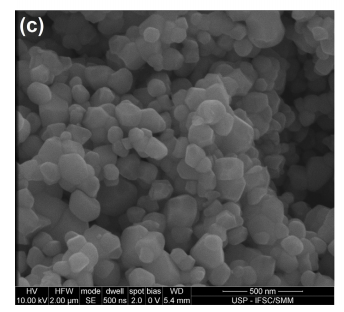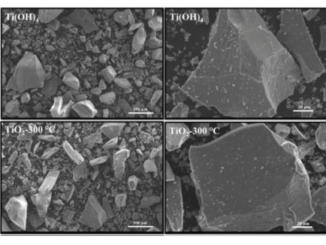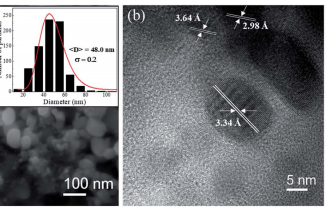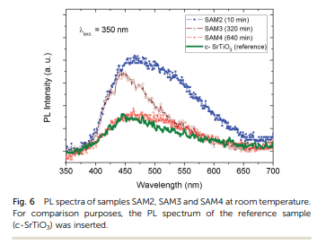
Zn1-xMgxO nanoparticles prepared by the polymeric precursor method: Correlation between photoluminescence and local structure
Abstract: ZnO is an n-type semiconductor having a wide band gap which has been studied as green phosphors because of its luminescence properties, although the centers and mechanisms responsible for its luminescence are still a matter of controversy. Band gap engineering of ZnO can be achieved by the incorporation of Mg atoms, resulting in the modification of the deep level emission in the visible region. In this study, nanostructured Zn1-xMgxO samples were prepared through the polymeric precursor method and their structural and photoluminescent properties were characterized. FE-SEM images reveal a polygonal morphology of ZnO nanoparticles and a uniform particle size ranging from 35 to for 91 nm depending on the annealing temperature. XRD results show that Zn1-xMgxO samples crystallized completely without the presence of secondary phases (up to 20 at. %) and the diffraction patterns correspond to the hexagonal wurtzite structure with P6(3)mc space. Theoretical and experimental XANES spectra at Zn K-edge along FTIR measurements suggest occurrence of O vacancies. These vacancies are related to the green emission of photoluminescence spectra for ZnO samples, which is centered at similar to 529 nm. As the Mg content increases, an enhancement of this emission is observed, which is associated with the recombination of electrons in Mg interstitials donor states and holes at Zn vacancies.
Author(s): de Oliveira, RC; Martins, DE; Bernardi, MIB; Mesquita, A
OPTICAL MATERIALS
Volume: 86 Pages: 71-78 Published: DEC 2018
DOI: 10.1016/j.optmat.2018.09.044




